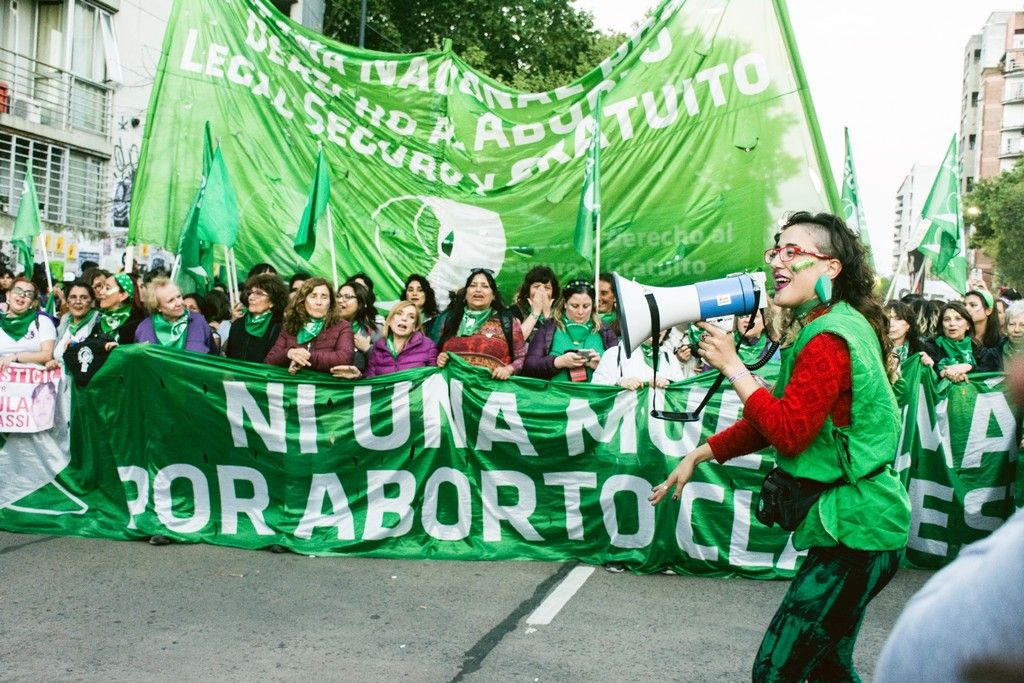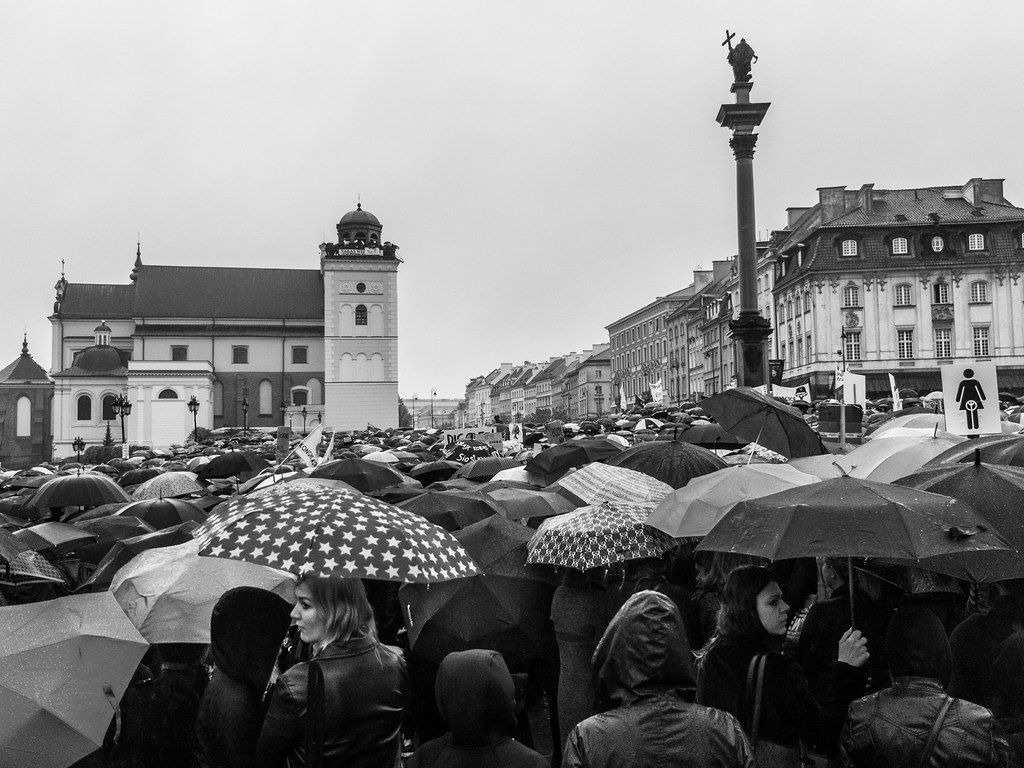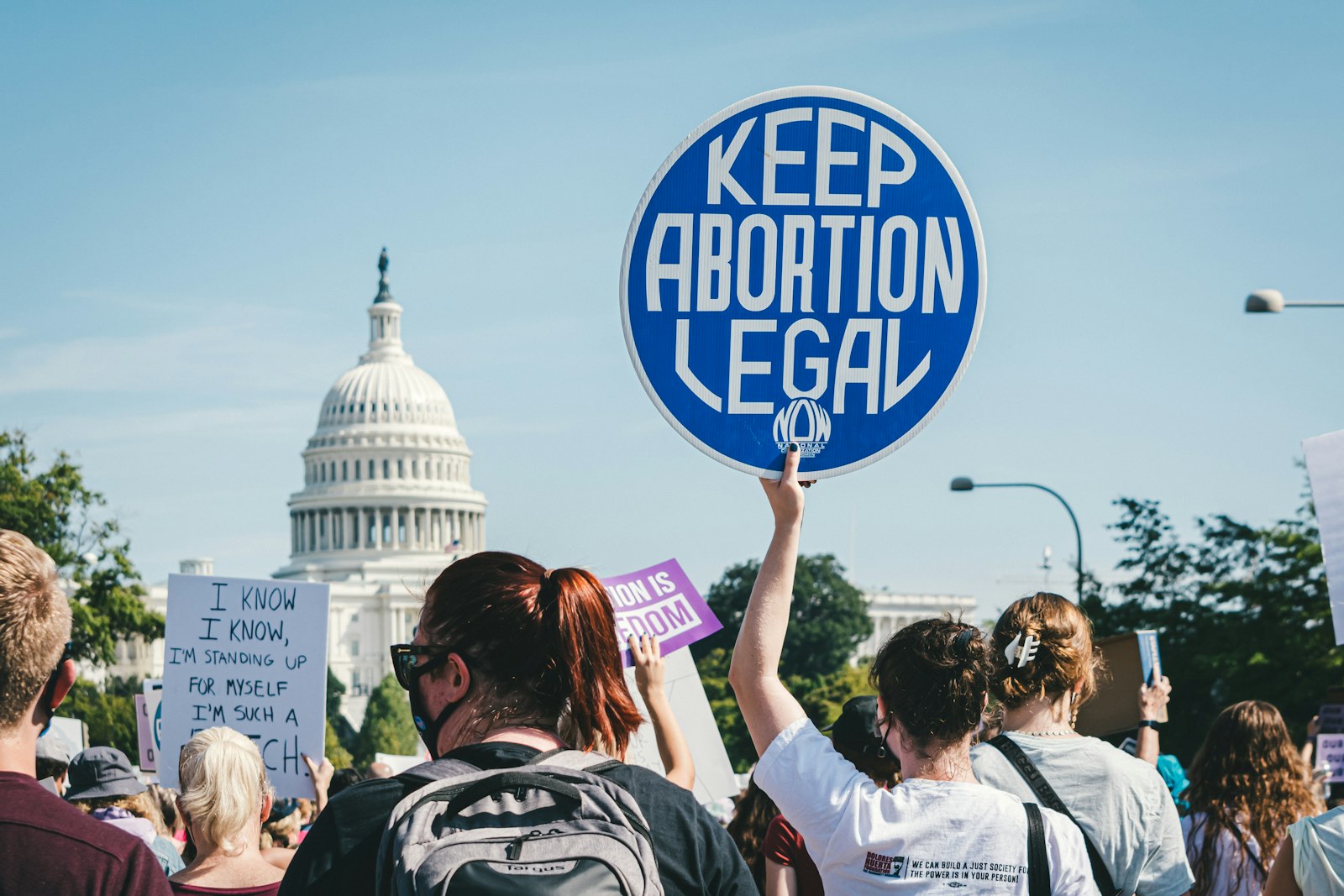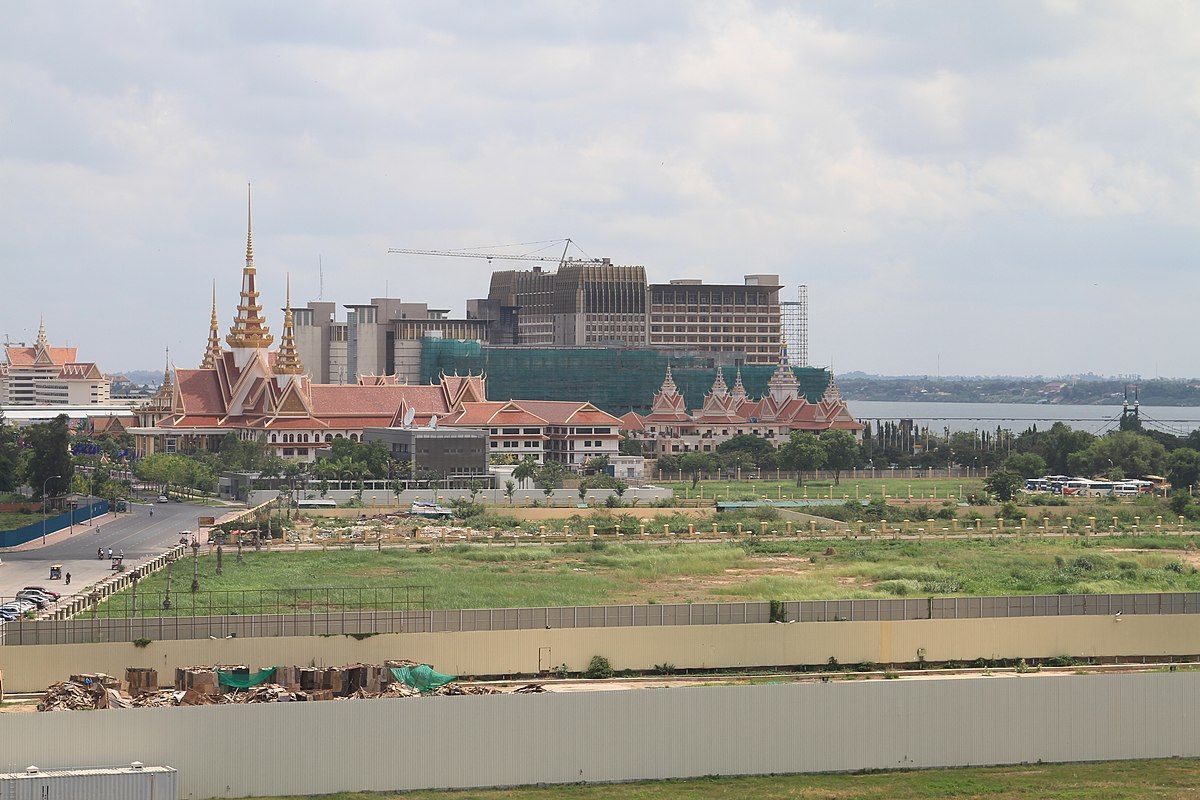On September 22, 2021, a 30-year-old Polish woman named Izabela died of septic shock at the hospital after her unborn baby’s heart stopped beating. Her death initiated waves of protests across Poland and was seen as the direct consequence of a near total ban on abortion passed in 2020, which outlawed the termination of pregnancies even in the case of fetal defects. Under this new law, unlawful abortion could lead to up to eight years in prison. Terrified of the law and of its potential consequences, Izabela’s doctors waited too long to terminate the pregnancy despite knowing the potential risks for the mother—resulting in her death.
The case of Poland sheds light on a puzzling contemporary phenomenon. The right to abortion has recently been under attack in several countries where it was previously legalized in the late 20th century. In September 2021, the US Supreme Court refused to block legislation in Texas that would ban terminations of pregnancy after six weeks, which is after many women are even aware that they are pregnant. In Turkey, where abortion has been legal since 1983, President Erdogan’s conservative position on abortion is making it increasingly difficult for women to access abortions in public hospitals. Though there is no formal legal basis criminalizing abortion yet, Erdogan's anti-abortion rhetoric has deterred many public providers from conducting the procedure—with the president’s words holding more significance than the actual law. In China, where abortion restrictions had been relaxed in the 1960s, the government is now moving to limit access to abortion in response to the country’s falling birth rates and gender inequality.
These countries are moving in the opposite direction of the global trend of relaxing abortion laws. Since 2018, nations such as Ireland, Mexico, South Korea, and Argentina—which traditionally had very strict regulations on the issue—voted for the decriminalization of abortion in landmark rulings. In Mexico, the decision came around the same time as the Texan abortion ban, raising the prospect of American women travelling across the border to receive an abortion. In Argentina and Ireland, the decision came in the aftermath of massive years-long protests, with the Catholic Church historically opposing access to abortion.
What explains these divergent global trends in abortion access? Religion has typically been a deciding factor in national legislation on abortion. Countries with a strong Catholic national identity, such as Ireland and Poland, historically resisted adopting pro-choice legislation. Yet the cases of Ireland, Argentina, and Mexico, contradict this point: their recent pro-choice rulings being a major blow to national religious establishments. To explain this divergence, we can look to the contrasting cases of Argentina and Poland—two Catholic societies that made the news in 2020 for their abortion legislation—in an effort to understand the nuances that lead to legalization versus criminalization.
The Marea Verde: Argentina’s Historical Pro-Choice Success
In the early 21st century, Argentina was among the dozens of countries in Latin America —and the world—with restricted access to abortion. Because of the strong influence of the Catholic Church, barriers to abortion had been ingrained in the country’s legal system, but also in the minds and consciousness of health providers, many of whom consistently refused to support abortion. Though abortion had been legalized in the case of rape or threats of life to the mother in 2012, illegal terminations of pregnancy for other reasons were still widespread in the country, supported by Soccoristas—a network of volunteers who provided support during medication abortions outside the formal health care system. Soccoristas primarily acted as sources of medical information, and they provided both psychological support and connections to doctors who were willing to conduct the abortion procedures. Before legalization, abortion was the third leading cause of pregnancy-related deaths in Argentina, with an average of 56 deaths a year reported to have occurred as a result of complications following an abortion.
In response to these restrictions and health concerns, the Marea Verde (Green Wave) movement began in 2018 when Argentine women took to the streets wearing green scarves to support the full legalization of abortion. The green scarves had been used for several years as part of the #NiUnaMenos (Not One Woman Less) movement against violence towards women—the scarves themselves were a resistance symbol that dated back to the days of military dictatorship, when mothers and grandmothers of desaparecidos (people who had been abducted or disappeared for political reasons) protested against state violence on the Plaza de Mayo in Buenos Aires.
Millions of women took part in the Green Wave protests, and decades of grass-roots pressure proved effective over time. In 2018, the movement faced disappointment when legalization failed in the Senate by a 38 to 31 margin. At the time, arguments had centered around morality and religion, but after 2018, the arguments transitioned to a public health focus. Rooted in the #NiUnaMenos movement and the fight against gendered violence, the pro-choice movement after 2018 focused on mothers’ health and the public health costs of criminalization. Clandestine abortion clinics were operating in Argentina, legal or not, and regularization would only make their practices safer. In the Green Wave movement, legalization was not about the life or death of a fetus—it was about the life or death of a mother.
Finally, at the peak of the Green Wave protests and also in the middle of a global pandemic, a second bill was brought to the Argentina Senate for the legalization of abortion. On December 30, 2020, after hours of debate, the bill was approved with a 38 to 29 margin—a historic moment for Argentina. In the streets, supporters of the legislation turned the night into a celebration with music and dancing, filled with the emotion that can only come with the end of a generations-long struggle.

This historical success inspired women beyond Argentina’s borders to take on the fight for their reproductive rights. Months later, protesters in Mexico wore the same green scarves in the streets before the Supreme Court ruled criminalizing abortion as unconstitutional. The symbol made its way to Europe, where Polish protesters took to the streets wearing the same green scarves. In Poland, however, the protestors faced a different challenge, attempting to resist a recent near-total ban on abortion in a country that had liberalized access to abortion in the past.
The Black Protests: Poland’s Recriminalization of Abortion
In the early 1900s, many considered Poland a trailblazer with respect to abortion rights. In 1932, Poland legalized abortion in the cases of rape, incest, and when the pregnancy endangered the mother’s life or health. It was the second country in the world to do so, falling only behind the Soviet Union. In 1956, Poland expanded abortion rights to include social justifications for obtaining an abortion. Specifically, when women cited “difficult living conditions,” Polish laws deemed them eligible to obtain an abortion. From 1956-1989, 97 percent of all abortions were performed for social reasons. Much of this progress can be attributed to the subordinate role of the Catholic Church under the communist government. With a weak Church unable to present much opposition, the communist government seized the moment to pass liberal abortion laws. They saw clear benefits from legalizing abortion as women would be able to obtain them safely, instead of risking their lives during illegal procedures.
In 1990, however, the communist regime fell due to pressure from the Solidarity Movement, a group that began as a trade union but transformed into an anti-communist social movement. As a result, the Polish government could no longer restrain the Church’s influence. With 87 percent of adults in Poland identifying as Catholic, Catholic influence in Poland was always inevitable. And when the communist regime fell, the Church saw a new surge in power thanks to its tremendous involvement in the anti-communist movement. The Catholic Church had been consolidating power since the inception of the communist government, working to build more churches and parishes to expand its national network. When the Solidarity Movement began, the Church seized the opportunity to get involved and celebrated the birth of the Solidarity Congress with a mass in a nearby church. The Church became an emblem of resistance against communism, and Poland rebuilt its government under the backdrop of a rising tide of Catholic nationalism. The Church aimed to institutionalize its influence in Polish society and pushed the government to pass pro-religious laws, such as those allowing Catholic instruction in public schools and religious displays in governmental offices.
Predictably, this religious influence prompted the government to pass more restrictive abortion laws. Beginning in 1990, abortion received national attention as a controversial issue, and new regulations made it substantially harder for women to receive them. New laws required consent from three specialists and a psychologist to go through with the procedure, and allowed them to charge consultation fees. In early 1993, Poland removed the ability to obtain an abortion for social reasons. When a liberal government was elected later in 1993, it found ways to reintroduce social justifications, but only up until 12 weeks gestational age and with required counseling. The law was finally settled in 1997, when the Constitutional Court decided that social abortions were unconstitutional.
Since then, Poland has continued to put forward more restrictions on abortion, with multiple iterations of bills proposing to almost entirely ban the practice. Poland’s anti-abortion laws are largely driven by the Law and Justice Party (PiS Party), which is functionally a Catholic nationalist party. The party believes that the Church and Polish government should be interconnected, and views the Church as integral to Polish national identity. The most threatening attempt to restrict abortion rights occurred in 2016, which resulted in the first large wave of abortion protests in Poland. This abortion bill came about as a result of a citizen’s initiative—a petition with at least 100,000 signatures. This specific petition received 450,000 signatures.
On October 3, 2016, up to 116,000 people protested nationwide against the legislation. This day came to be known as “Black Monday,” inspired by the 1975 protests in Iceland against unfair employment practices and wage discrepancies. Thousands of women went on strike against proposals for an abortion ban that would be as restrictive as the ban in place in the Vatican. The law would have punished women who received an abortion with 5 years in prison, and threatened doctors who performed abortions with emprisonment. At this point, Poland already had some of the most restrictive abortion laws in Europe, only allowing abortion in cases of fetal anomaly, threat to the mother’s health or life, and rape or sexual abuse. The Parliament ultimately rejected the bill by a margin of 352 to 58.

Poland’s main opposition party, the Civic Platform, only recently began emphasizing abortion rights as part of its agenda, which explains why protests are just now gaining momentum after years of restrictive policies. Slowly but surely, the Polish public is becoming more approving of abortion rights, indicating the waning influence of national Catholicism on this issue. Currently, about two-thirds of Poles support legal abortion up to 12 weeks—a substantial increase compared to the 59 percent who supported the policy in 2019.
Nevertheless, despite these political shifts, abortion rights in Poland are once again under attack. On October 22, 2020, the Constitutional Tribunal, the highest court in Poland, banned abortions due to fetal defects claiming they violate the right to life. Massive protests ensued on October 23, as fetal defects comprised 98 percent of abortions in Poland. More than 430,000 people attended the demonstrations, making them the largest protests in Poland since the Solidarity Movement. Protesters showed up carrying black umbrellas, which became a symbol of abortion rights after women used umbrellas to shield themselves from rain in the 2016 protests. In response to the protests, Polish president Andrzej Duda publicly offered to propose a bill reinstating abortion rights in cases of fetal abnormalities. Instead, the government agreed to delay the publication and implementation of the Constitutional Tribunal ruling. However, on January 27, 2021, the ruling was finally published, implementing the law prohibiting women from obtaining abortions for fetal defects.
As the situation in Poland becomes more dire, many question what happened to this country, which was once considered a bastion of hope for abortion in Europe. But is it accurate to view Poland this way?
Taking Abortion Rights for Granted: Fighting the Good Fight
At face value, Poland seems like a case of rising conservatism undoing liberal progress. In reality, under the communist regime, abortion was not truly considered an inviolable human right by the Polish population. The communist government merely viewed abortion as a utilitarian tool for dealing with unwanted pregnancies: many women lacked knowledge about contraception, so the government viewed abortion as a second-best option for population control. Once the communist government lost power, Poland reverted to the baseline for most religious societies and heavily restricted abortion.
This trend of abortion rights being granted as a utilitarian tool rather than a fundamental human right is not unique to Poland. Turkey legalized abortion in 1983 to reduce the number of women dying from unsafe, illegal abortions. However, this did not occur as a result of protests, but rather at the discretion of a military government. As such, abortion was not necessarily recognized as a human right, but rather as a societal necessity declared by a dictatorial government. Similarly, China had begun allowing abortions in the 1960s as part of a birth control campaign, before making it illegal again when faced with a declining population. Once again, the government had legalized abortion not as a result of protests or a desire to recognize women’s rights, but for utilitarian reasons—which makes it easier today for these governments to restrict abortion.
In summary, historical trends suggest that countries that legalize abortion for demographic reasons have laws that are easy to overturn with changes in governmental power. In contrast, countries that legalize abortion as a result of protests may have laws that are much more difficult to overturn, since abortion is more ingrained in society as a human right.
Ultimately, the Argentine and Polish struggles are intricately interconnected, as both movements work to combat the power of the Catholic Church to determine the national sentiment on abortion. Both groups are demanding abortion be recognized as a fundamental human right. As such, activists from both countries can learn from each other, seeing how certain tactics galvanize public support and convince Catholic populations to endorse pro-choice policies. The only notable difference between Argentina and Poland in this regard is that Poland’s communist government, for 40 years, managed to stave off the Catholic Church’s influence by dictatorially instituting abortion rights—while never truly incorporating the right to abortion into Polish society. Therefore, the story being told about abortion in Poland is actually backwards: the fight has not been reignited, it has only just begun.





